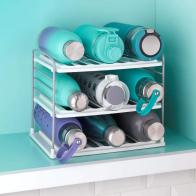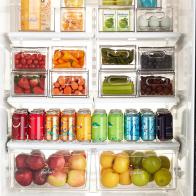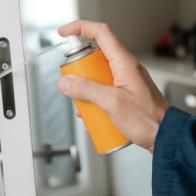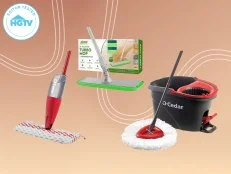Low-Flow Showerhead Benefits
Do you know how much water was used in your shower this morning? Drastically reduce monthly water consumption — and save money — by switching to a low-flow showerhead.

Most people would be surprised to learn that showers are responsible for up to 30 percent of typical household water use — and that’s a conservative number. Total water use in bathrooms is about 50 percent. That statistic is one that encouraged the Environmental Protection Agency to initiate its WaterSense campaign to conserve water and promote products such as low-flow showerheads. Products designed to applicable standards are labeled with a WaterSense trademark to help consumers make smart decisions.
The average US household can save about 2,900 gallons of water every year simply by installing a single low-flow showerhead. Just one will make that much difference. Multiply that by the number of bathrooms in every house in every town of every state. The impact is overwhelming.
Showers Go High-Tech
Prior to 1992, typical showerheads blasted out five to eight gallons of water per minute (gpm). Even if you speed through a shower in less than four minutes, that’s a lot of water. Fortunately, today’s showerheads must adhere to a standard of no more than 2.5 gpm. Low-flow models dispense only two gallons or less per minute, resulting in enormous savings. A quick reference point to test your current system is to simply place a one-gallon bucket in the shower and turn on the water. If the bucket fills in 15 seconds, you have a roughly 4 gpm rate of flow. Ten seconds to fill means 6 gpm. Compare that to a low-flow showerhead that takes at least 24 seconds to fill the bucket.
Low-flow showerheads today come in two types: laminar flow and aerating. Laminar flow heads produce separate streams of water, while aerating heads mix air and water to produce a mistier spray. Right up there with smartphones and televisions, some modern showerheads allow you to set a timer for conscientious cleaning, or push a button to preset the water temperature and eliminate the sometimes long (and wasteful) wait for the water to warm up.
Low-Flow Brings Big Benefits
The simple fact of conserving water is reason alone to choose a low-flow showerhead, but there are a host of other benefits as well.
- Decrease home water consumption by 40 percent or more.
- Save energy and lower annual heating costs.
- Significantly reduce your monthly water bill.
- Reduce CO2 emissions by using less energy.
Does Low-Flow Mean Low Pressure?
A common gripe about low-flow showerheads is they don’t provide enough pressure, and you practically have to splash the water on yourself. This misconception stems from lack of awareness and “that’s what it was like in the old days.” Indeed, early iterations of low-flow showerheads were far less effective and reduced water flow to just this side of a trickle. It’s a whole different ballgame today, as modern products blend an ingenious pairing of small apertures and air flow to deliver consistently strong pressure.
Saving Water Saves Money
Simply stated, a new low-flow showerhead will pay for itself several times over in its first year of use alone. Applying the data above, let’s say as an individual you take 25 seven-minute showers each month for 175 total minutes. With a 2.5 gpm showerhead, you’ll soak up nearly 440 gallons of water in one month from shower use alone. With a low-flow showerhead, 175 minutes of showering uses just 262 gallons of water. Which means you save about 60 percent every month. Translate that to yearly figures, and a 1.5 gpm showerhead uses just over 3,100 gallons of water versus over 5,200 with a 2.5 gpm model.
One person and one low-flow showerhead saves 2,000 gallons of water every single year. So, take the high road and go low.
































.jpg.rend.hgtvcom.196.196.suffix/1738869041672.jpeg)




















.jpg.rend.hgtvcom.231.174.85.suffix/1738869041672.webp)


























